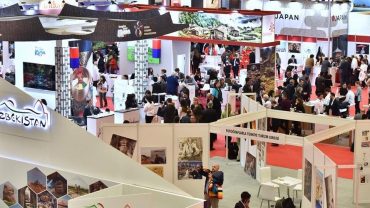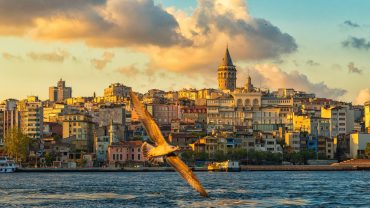Edirne (eng: /eɪˈdɪərnə), historically known as Adrianople (Latin: Hadrianopolis; founded by the Roman emperor Hadrian on the site of a previous Thracian settlement named Uskudama), is a city in the northwestern Turkish province of Edirne in the region of East Thrace, close to Turkey’s borders with Greece and Bulgaria. Edirne served as the third capital city of the Ottoman Empire from 1369 to 1453,[5] before Constantinople (present-day Istanbul) became the empire’s fourth and final capital between 1453 and 1922. The city’s estimated population in 2014 was 165,979.
Names and etymology
The city was founded as Hadrianopolis (Ἁδριανούπολις in Greek), named after the Roman emperor Hadrian. This name is still used in the modern Greek language (Αδριανούπολη, Adrianoúpoli). The Ottoman name Edirne derives from the Greek name. The name Adrianople was used in English until the Turkish adoption of the Latin alphabet in 1928 made Edirne the internationally recognized name. Bulgarian: Одрин, romanized: Odrin (pronounced [ˈɔdrin]), Albanian: Edrenë, Slovene: Odrin and Serbian: Једрене, romanized: Jedrene, are adapted forms of the name Hadrianopolis or of its Turkish version.
History
The area around Edirne has been the site of numerous major battles and sieges, from the days of the Roman Empire. The vagaries of the border region between Asia and Europe gives rise to Edirne’s historic claim to be the most frequently contested spot on the globe.[6]
Antiquity
The city was refounded eponymously by the Roman Emperor Hadrian on the site of a previous Thracian settlement known as Uskadama, Uskudama, Uskodama or Uscudama.[4] Hadrian developed it, adorned it with monuments, changed its name to Hadrianopolis (which would be corrupted into Adrianopolis, Anglicised as Adrianople). Licinius was defeated there by Constantine I in 323, and Emperor Valens was killed by the Goths in 378 during the Battle of Adrianople (378).
Medieval period
Historical image of Cihannüma Kasrı (Panoramic Pavilion), part of Edirne Palace complex In 813, the city was temporarily seized by Khan Krum of Bulgaria who moved its inhabitants to the Bulgarian lands north of the Danube.[7] During the existence of the Latin Empire of Constantinople, the Crusaders were decisively defeated by the Bulgarian Emperor Kaloyan in the Battle of Adrianople (1205). In 1206 Adrianople and its territory was given to the Byzantine aristocrat Theodore Branas as a hereditary fief by the Latin regime.[8] Theodore Komnenos, Despot of Epirus, took possession of it in 1227, but three years later was defeated at Klokotnitsa by Emperor Ivan Asen II of Bulgaria. In 1361, the Ottoman Empire under Sultan Murad I invaded Thrace. Murad captured Adrianople, probably in 1369 (the date is disputed). The city became “Edirne” in Turkish, reflecting the Turkish pronunciation.[9] Murad moved the Ottoman capital to Adrianople. Mehmed the Conqueror (Sultan Mehmed II) was born in Adrianople, where he fell under the influence of some Hurufis dismissed by Taş Köprü Zade in the Şakaiki Numaniye as “Certain accursed ones of no significance”, who were burnt as heretics by a certain Mahmud Pasha.[10] The city remained the Ottoman capital for 84 years until 1453, when Mehmed II took Constantinople (present-day Istanbul) and moved the capital there. Edirne is famed for its many mosques, domes, minarets, and palaces from the Ottoman period.
Modern period
Under Ottoman rule, Adrianople was the principal city of the administrative unit, the eponymous Eyalet of Adrianople, and after land reforms in 1867, the Vilayet of Adrianople. Sultan Mehmed IV left the palace in Constantinople and died in Adrianople in 1693. During his exile in the Ottoman Empire, the Swedish king Charles XII stayed in the city during most of 1713.[11] Bahá’u’lláh, the founder of the Bahaʼi Faith, lived in Edirne from 1863 to 1868. He was exiled there by the Ottoman Empire before being banished further to the Ottoman penal colony in Akka. He referred to Adrianople in his writings as the “Land of Mystery”.[12] Adrianople was a sanjak centre during the Ottoman period and was bound to, successively, the Rumeli Eyalet and Silistre Eyalet before becoming a provincial capital of the Eyalet of Edirne at the beginning of the 19th century; until 1878, the Eyalet of Adrianople comprised the sanjaks of Edirne, Tekfurdağı, Gelibolu, Filibe, and İslimye. Adrianople was briefly occupied by imperial Russian troops in 1829 during the Greek War of Independence and in 1878 during the Russo-Turkish War of 1877–1878. The city suffered a fire in 1905. In 1905 it had about 80,000 inhabitants, of whom 30,000 were Turks; 22,000 Greeks; 10,000 Bulgarians; 4,000 Armenians; 12,000 Jews; and 2,000 more citizens of unclassified ethnic/religious backgrounds.[citation needed] Adrianople was a vital fortress defending Ottoman Constantinople and Eastern Thrace during the Balkan Wars of 1912–13. It was briefly occupied by the Bulgarians in 1913, following the Siege of Adrianople. The Great Powers–Britain, Italy, France, and Russia–attempted to coerce the Ottoman Empire into ceding Adrianople to Bulgaria during the temporary winter truce of the First Balkan War. The belief that that government was willing to give up the city created a political scandal in the Ottoman government in Constantinople (as Adrianople was a former capital of the Empire), leading to the 1913 Ottoman coup d’état. Although it was victorious in the coup, the Committee of Union and Progress under Enver Pasha was unable to stop the Bulgarians from capturing the city after the fighting resumed in the Spring. Despite relentless pressure from the Great powers(Russia, Britain,France) the Ottoman empire never officially ceded the city to Bulgaria. Edirne was reconquered by the Ottoman empire during the Second Balkan War under the leadership of Enver Pasha (who later proclaimed himself the “second conqueror of Adrianople”, after Murad I) following the total collapse of the Bulgarian military might in the region It was ceded to Greece by the Treaty of Sèvres in 1920 but would be recaptured and annexed by Turkey following the decisive Greek defeat at the end of the Greco-Turkish War, also known as the Western Front of the larger Turkish War of Independence, in 1922. During the Greek administration, Edirne (officially known as Adrianople) was the capital of the Adrianople Prefecture. Adrianople became known in Western languages as “Edirne” circa 1930.[13] From 1934 onwards Edirne was the seat of the Second Inspectorate General, in which a Inspector General governed over the provinces Edirne, Çanakkale, Tekirdaĝ and Kırklareli.[14] The Inspectorate Generals governmental posts were abandoned in 1948,[15] but the legal framework of them was only abolished in 1952, under the government of the Democrat Party.[16] According to the 2007 census, Edirne Province had a population of 382,222 inhabitants. The city is a commercial centre for woven textiles, silks, carpets and agricultural products.
Points of interest
Situated 7 km (4.3 mi) from the Greek and 20 km (12 mi) from the Bulgarian borders, Edirne is famed for its many mosques, domes and minarets. The Selimiye Mosque, built in 1575 and designed by Turkey’s greatest master architect, Mimar Sinan (c. 1489/1490–1588), is one of the most important monuments in the city. It has the highest minarets in Turkey, at 70.90 m (232.6 ft) and a cupola 3 or 4 ft (0.91 or 1.22 m) higher than that of Hagia Sophia, the former Byzantine Orthodox Cathedral (now mosque, museum from 1935-2020 )in Istanbul. Carrying the name of the then reigning Ottoman Sultan Selim II (r. 1566–1574), this mosque futures Turkish marble handicrafts, and it is covered with valuable tiles and fine paintings. Other notable mosques are Eski Cami (Old Mosque),[20] and Burmalı Cami (Serpent Mosque), aka Üç Şerefeli Mosque.[21] Edirne has three historic covered bazaars: Arasta, next to Selimiye Mosque, Bedesten next to Eski Cami and Ali Paşa Çarşısı (Ali Pasha Bazaar). Besides the mosques, there are visitor attractions in Edirne, all reflecting its rich past. The most prominent place being the Edirne Palace (Ottoman Turkish: Saray-ı Cedid-i Amire for “New Imperial Palace”) in Sarayiçi quarter, built during the reign of Murad II (r. 1421–1444). Although the buildings of the palace and its bath (Kum Kasrı Hamamı) are in ruined form, the palace gate and the palace kitchen facility are restored. The Kasr-ı Adalet (“Justice Castle”), built as part of the palace complex, stands intact next to the small Fatih Bridge over the Tunca river.[22] Another notable building in the area is the Complex of Sultan Bayezid II, an important monument with its complex construction comprising many facilities used in those times. The Balkan Wars Memorial Cemetery is located close to the Edirne Palace, with an unknown soldier monument featuring an Ottoman soldier in front of its entrance.[23] The historic Grand Synagogue of Edirne, abandoned and ruined, was restored and re-opened in March 2015.[24][25][26] A Roman Catholic and two Bulgarian Orthodox churches are found in the city. Edirne has several historic arch bridges crossing over the rivers Meriç and Tundzha, which flow around west and south of the city. There are caravansaries, like the Rustem Pasha and Ekmekcioglu Ahmet Pasha caravansaries, which were designed to host travelers, in the 16th century. The historic Karaağaç railway station hosts today, after redevelopment, the Trakya University’s Faculty of Fine Arts in Karaağaç suburb of Edirne.[23] Next to it, the Treaty of Lausanne Monument and Museum are situated.
Culture
The traditional oil-wrestling tournament called Kırkpınar, is held every year in late June or early July.[28] Kakava, an international festival celebrating the Roma people is held on 5 May each year.[29] A cultural partnership with Lörrach, Germany began in 2006. The goal is to exchange pupils and students to improve their cultural skills and understanding. Edirne is well known for local dishes. “Ciğer tava” (breaded and deep-fried liver) is often served with a side of cacık, a cool dish of diluted strained yogurt with chopped cucumber. Also, locally-made marzipan, which has a different recipe from standard marzipan, is one of Edirne’s traditional desserts. Handmade brooms with a mirror in them are one of the cultural images of the city and a central marriage tradition. Miniature versions are still sold in gift shops.
Economy
Edirne’s economy largely depends on agriculture. 73% of the working population work in agriculture, fishing, forests and hunting. The lowlands are productive. Corn, sugarbeets and sunflowers are the leading crops. Melons, watermelons, rice, tomatoes, eggplants and viniculture are important. The through highway that connects Europe to Istanbul, Anatolia and the Middle East passes through Edirne. Historic buildings and events have elevated tourism’s role in the economy. Industry is developing. Agriculture-based industries (agro-industries) are especially important for the city’s economy.






Comment (0)